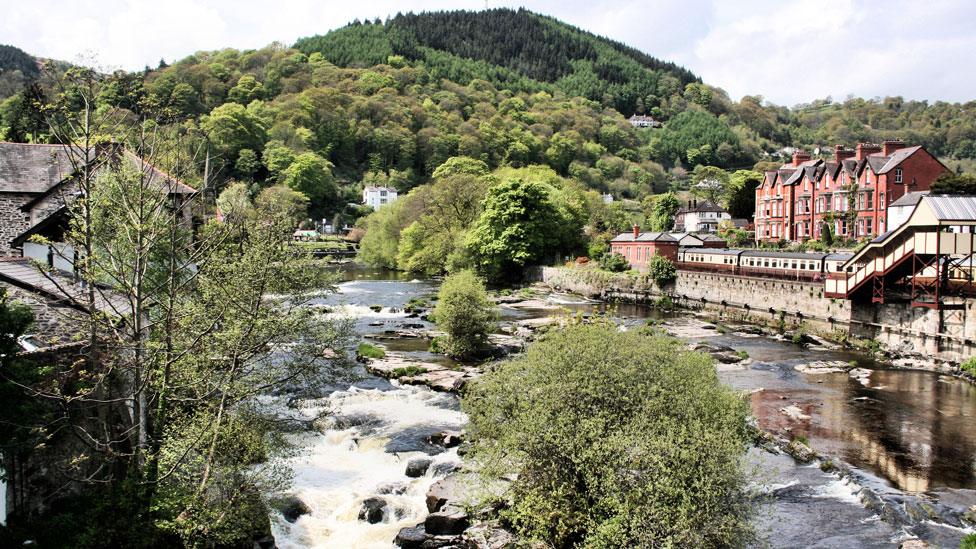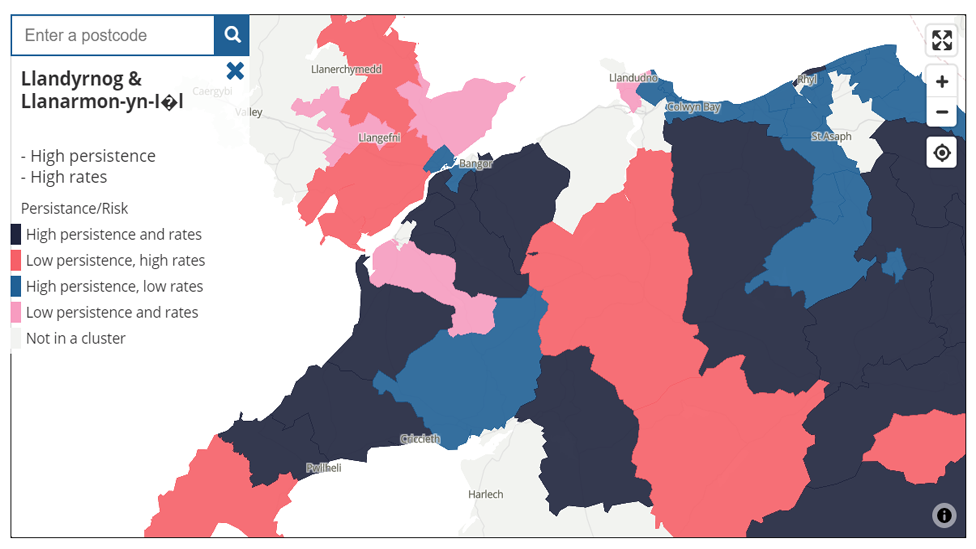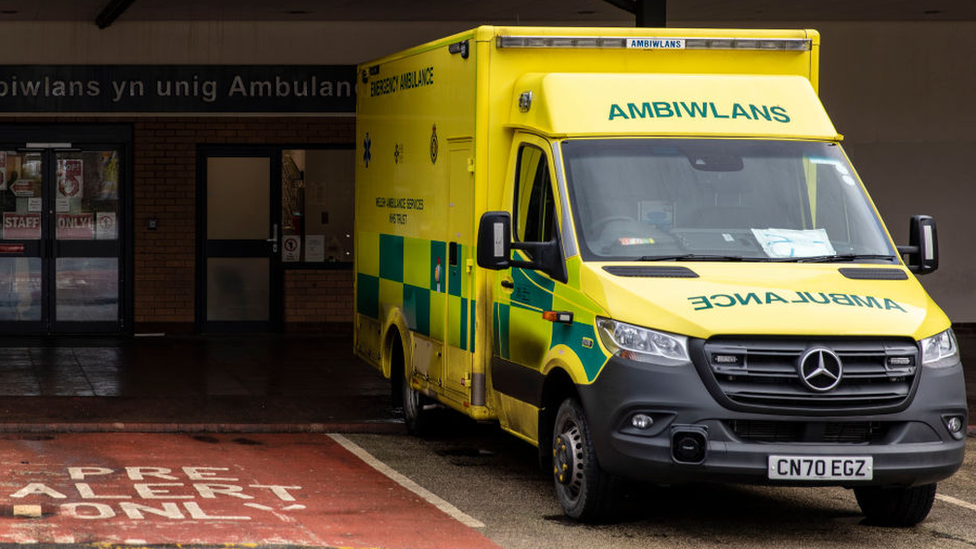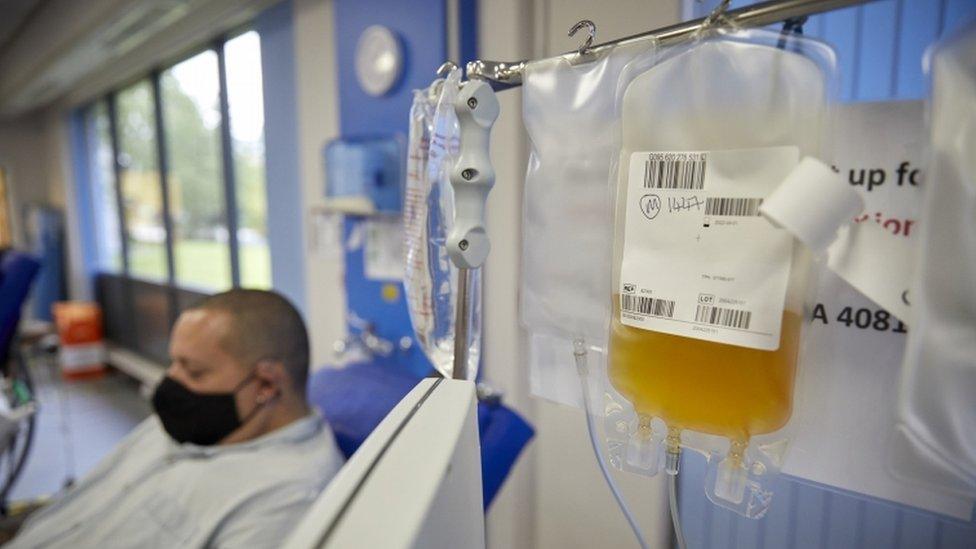Covid tracked - and how it embedded in rural Wales
- Published

Llangollen, Denbighshire is among many local areas showing up with higher than expected mortality rates over a long period in the first wave
Analysis of Covid-19 deaths in the first wave of the pandemic in Wales has showed how the virus took a grip at very local levels of the country.
Experts found not all deaths could be explained by factors such as economic deprivation, age and ethnicity.
Clusters in some parts of rural Wales persisted, according to the Office for National Statistics (ONS) research,
It suggests more work is needed to look at factors like travel and high risk occupations.
The research tracked nearly 2,000 deaths from the virus in Wales, broken down across more than 400 local areas up to the end of August.
Because there was little testing on-demand in the early weeks of the pandemic, hospital figures and deaths are the only real measure of the infection's spread up to the autumn of 2020.
This study looked to isolate known risk factors - such as poverty, age and ethnic background - and found "substantial variation remains unexplained".
While there was higher mortality in historically more deprived areas like the south Wales valleys, consistently higher mortality was also found in smaller, rural areas within Powys, Gwynedd and Anglesey.
Although not large in numbers, they were higher rates than might expect to be found.

ONS have produced a map showing the clusters, with the high rates, high persistent areas in the darkest blue
"We ended up with these areas where there were more deaths than we would have expected, even after taking into account factors such as economic deprivation, age, ethnicity," said Myer Glickman, one of the study's authors.
Analysis suggests some of the factors at play are around travel, occupations, living and working in working in different areas and movement patterns between urban and rural areas.
The research found some rural parts of Wales, deaths from Covid carried on over a longer period, beyond spikes in the first wave.
Clusters identified later in the pandemic - up to early June - included communities in north Wales.
"We found mainly low rates in the rural clusters throughout the bulk of the first wave," added study co-author Jordan Parker.
"Deaths were not much higher than expected but were still around for a longer time from March and into May and June. Just the fact they were there, was slightly surprising."
The study looked at the very start of the pandemic in Wales, where we know already there were concerning hotspots around Caerphilly, Newport and the Gwent valleys.
But by the peak of the first wave in mid April, these "unexpected" local areas of Wales with higher Covid deaths were more widespread - and included communities in Powys, as well as urban centres like Cardiff and Swansea.

ONS has produced an interactive map to show where the clusters are - most of Wales was in a cluster of higher mortality at least once
The ONS has produced an interactive map, external - which shows each community, such as Llandyrnog and Llanarmon-yn-Ial in Denbighshire or Abergwili, Llanegwad and Carmel in Carmarthenshire, among those which have "high persistence and rates".
Other areas like Tywyn and Llangelynnin had in Gwynedd have higher rates but only showing at fewer times during the pandemic.
What are the categories?
High persistence and rates: The local area is part of a cluster of higher rates for most of the first wave and had repeatedly high Covid mortality rates itself.
Low persistence, high rates: Part of a cluster of higher rates once or a few times.
High persistence, low rates: The community was part of a cluster of higher rates for most of the time but did not have notably high mortality itself for most of the time.
Low persistence and rates: In a cluster of higher rates once or a few times but did not have notably high mortality rates itself.
Not in a cluster: Mortality rates were equal to or lower than the rest of the country and never part of a higher rates cluster.
'We all need to take care'
Bobby Feeley, a Denbighshire councillor in Ruthin, said compared with the first wave people had more knowledge about Covid - and it was not just about numbers but "real people" and very few had not been touched by it in some way.
"In the first wave, I think we were all in shock, we didn't really know what had hit us," she said.
"People are now probably looking into finer details of what's gone on and things will come to light. Wherever it happens, whether rural or urban, it's everywhere, so we all need to take care."
Ruthin was identified as being close to a cluster of higher rate communities but not having higher mortality itself most of the time.
"In rural areas, houses and people are more spaced apart, in many rural areas there are few shops and the pubs are shut, you would think they would have less chance of picking up Covid," added Ms Feeley.
"If they have done, have people travelled somewhere, formed bubbles with friends and family? I would've assumed rural areas would have less Covid."
The study recommends more research - including into the routes of infection in and around the country but also into specific groups of occupations or types of household associated with high infection risk.
Larger scale testing of people with symptoms since the autumn means that Public Health Wales - and statisticians - can track far more easily how infection is spreading and where hotspots of positive tests show up in local communities.
Wrexham communities have been reporting Wales' high infection rates in recent weeks, while the local hospital has reported a "rapid increase" in seriously ill people in the last few days. and the health board has more people in critical care with Covid than at any time in the pandemic.
The ONS said it will be analysing closely local mortality data to see how it correlates with case figures during this second wave.
- Published8 February 2021

- Published28 May 2024

- Published4 February 2021

- Published26 March 2021

- Published15 January 2021
